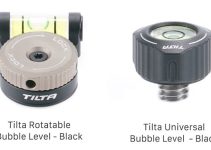You can endlessly toy and tinker, trying to add textured, cinematic lighting to an otherwise flat and boring scene, plugging countless lights into every outlet, setting up modifier after modifier, and tweaking until the clock runs out and never be happy with the results. Or, you could just use this neat little trick from DSLR Video Shooter – mirrors.
Though vampires may despise them, and breaking one could net you seven years of bad luck, mirrors were originally used just to reflect enough sunlight to expose the film in the camera, and they quickly became a crucial tool for film lighting, and even camera placement.
For various reasons, ‘professional’ mirrors can be expensive but here are some tricks for how you can use cheap, ordinary mirrors to do a lot with your light kit.
The overall concept here is incredibly simple. Bouncing your light source off of a mirror and reflecting that light back into your scene gives you the greatest possible control over its size, shape, and texture.
With light the angle of incidence is always equal to the angle of reflection, so you can place your lights anywhere within the scene (and even bounce off from your key light) and use that reflected like to paint that scene however you want.
Moving the light closer to the mirror creates a larger reflection, and moving it further away makes the reflection smaller.
You can use a mirror to simulate sunlight through a window, create specular lighting for a textured detail for the background, or go full film noir and cover a section of mirror with pieces of gaff tape to make it look like window blinds.
Creating an evenly light, but nature looking scene is the goal of any good DP and this makes that task incredibly easy, even without an entire gaffing crew.
Sometimes mirrors can help the camera department too. You might find that a big, clean, front-surface mirror can help you frame that otherwise impossible shot, and make a tiny room seem more spacious when you shoot through it. Then all you have to do is flip the image around in post, and no-one will ever know.
Mirrors that are used on professional sets, however, can be super expensive. Caleb points out that a set of Light Bridge mirrors costs around $800. There is generally a good reason for this as these mirrors are designed to maintain the color accuracy of the light – so that the reflected light is the same color as the non-reflected light in your scene.
But since the goal here is to add texture and style, Caleb isn’t factoring in any color cast from the mirrors and he is often dirtying them up just to help add ‘a little something’ to his shot. And these affordable options really seem to do the trick.
Using a single, cheap light with a mirror can replace a more expensive fixture too.
Notice the simulated window light on the right – mirrors produce a very similar effect for more than $1000 less.
Rather than spend all that dough on an easily breakable sheet of glass, this run-and-gun shooter recommends purchasing acrylic mirrors, which is a versatile plastic material that will crack, but not shatter and seriously injure somebody.
You can also use reflective tape on foam board, which will be lighter and safer to work with on set but also a bit less reflective. Caleb recommends 12” x 12” panels, but also finds a lot of uses for smaller 4”x4” mirrors and even some really big ones too.
And mounting them so you can place them anywhere is quick and easy – with a little epoxy glue and a small bolt for the little ones, or a studded baseplate for the larger sections.
The amount of time and money that you can save on set by taking this approach could be the make-or-break difference for an independent film production, not to mention it will definitely add an extra pop of visual interest to your scenes. Just be careful, not to cut yourself.
[source: DSLR Video Shooter]
Disclaimer: As an Amazon Associate partner and participant in B&H and Adorama Affiliate programmes, we earn a small comission from each purchase made through the affiliate links listed above at no additional cost to you.




